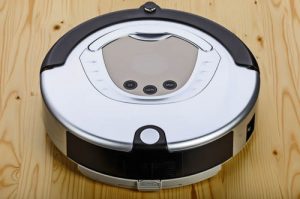Adding hardware to a system typically means adding to the cost of energy to operate it, right? In most cases, yes, this is the conventional wisdom. In the case of an autonomous robotic vacuum cleaners or drones that are battery-operated, users operate the devices as long as possible between charges to maximize capabilities.
Battery-operated devices, such as robotic vacuum cleaners, have a finite battery capacity, no matter how long you charge it. Adding more batteries in an attempt to add more operating capacity, adds to the weight and size of the device without bringing an exponentially large payoff in operating capacity. The addition of more batteries means there needs to be an increase the size of the vacuum cleaner to accommodate them does not decrease the vacuum’s core effectiveness of picking up debris. However, if you incorporate vision processing, and computer aided vision systems you amp up the vacuum’s ability to clean the floor in a more efficient manner without having to add more battery power.
Working with drones means researchers wanted to find ways to maximize flight time and increase the capacity of capturing information while operating on a battery that suits the flight patterns. The bigger the drone, the bigger the motor and batteries and the shorter the flight capabilities. Maximizing flight time is the key design objective of developers. Again, computer aided vision assists with this former design “flaw.” By adding the computer vision, the drones fly more effectively and are better able to maneuver to the selected location with more efficiency without having to add weight and size to accommodate more battery power.
In both examples, net energy savings are realized through the installation of a vision system because they are able to be incorporated to use lower power than the typical battery operated functions.
Universe Kogaku designs and manufactures optical lenses for industrial, medical, high tech and electronic applications. Standard and custom lens assemblies are also available for scanners, CCTV, CCD/CMOS, medical imaging, surveillance systems, machine vision and night vision systems.